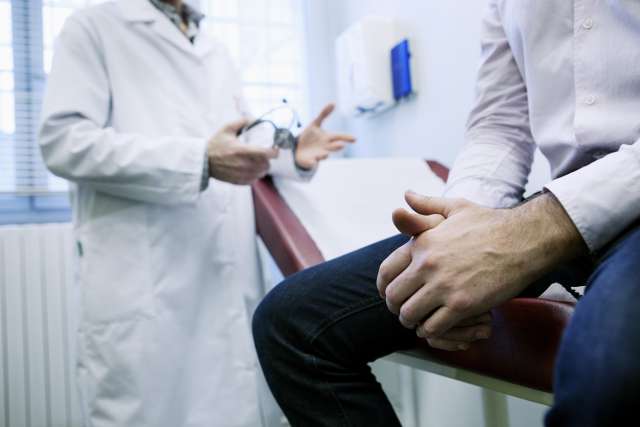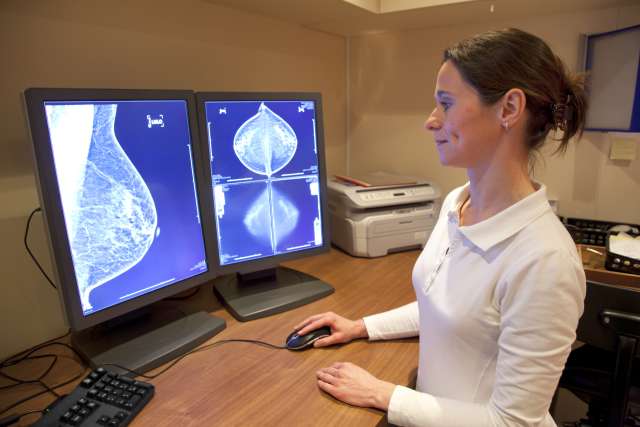IMPACT
Although formally identified in 2003, the fundamental causes for osteonecrosis of the jaw (ONJ) development and its treatment remain unclear. New research provides a better understanding of how ONJ progresses and its cellular and structural activators, which could guide the development of therapeutic and preventive measures.
FINDINGS
Diseases associated with bone loss such as osteoporosis are common in older populations and in people who have bone-metastic cancers. To prevent bone loss in vulnerable populations, patients take bisphosphonate, small molecules that bind tightly onto the bone, and denosumab, the neutralizing human anti-receptor activator of NF-kB ligand (RANKL) antibody. These drugs effectively inhibit the functions of osteoclasts, which are the cells that break down bones.
However, for people taking these drugs, one of the most significant side effects is bisphosphonate-related or denosumab-related osteonecrosis of the jaw (BRONJ or DRONJ, respectively); this is defined as exposed dying bone and unclosed overlaying oral mucosa for at least eight weeks.
Scientists have speculated that these drugs cause ONJ based on how these drugs directly affect osteoclasts. However, the extent to which osteoclasts contribute to the development of ONJ remains uncertain. Researchers at the UCLA School of Dentistry have taken a new approach to understanding the development of ONJ.
A research team, led by Dr. Reuben Kim, associate professor of restorative dentistry and oral biology and medicine, developed and compared two different mouse models, one for BRONJ and one for DRONJ. In each model, Kim removed teeth to examine the physical characteristics that marked how ONJ progressed inside the mouse’s mouth.
The BRONJ model was established by treating mice with bisphosphonate and the DRONJ model with mouse version of denosumab, anti-mouse-RANKL-neutralizing antibody that ifies the functions of RANKL, which plays a critical role in determining how osteoclasts differentiate and form.
When the researchers compared the two mouse models, they found that lesions developed in 20 percent of the bisphosphonate models and in 50 percent of the denosumab models. Interestingly, lesions developed in the DRONJ model in the absence of osteoclasts because anti-mouse-RANKL antibody completely inhibited osteoclast formation.
This was an important finding because it suggests that the presence of osteoclasts may not be solely related to ONJ development. Rather, dysfunctional osetoclasts failed to break down all the bone at the wounded areas, and that may have caused the ONJ lesions. With this new revelation, the team surmised that it may be possible that progression of ONJ is primarily associated with structural defects, such as bone surfaces that failed to break down because of impaired functions or the formation of mature osteoclasts by bisphosphonates and denosumab, and not osteoclasts alone.
Taking this new finding one step further, the team examined the broken down bone structure around the ONJ lesion that formed where the tooth was removed in both mouse models. The comparison revealed a striking correlation between new bone formation within the sockets where teeth were extracted and complete wound closure.
The researchers said this suggested that newly formed bone or woven bone plays a key role during the healing process in the oral cavity. This led the team to posit that woven bone acts as a bridge between soft and hard tissues in the oral cavity. Therefore, enhancing woven bone formation when osteoclasts fail to breakdown bone may help prevent ONJ development for patients who are taking bisphosphonate and denosumab.
AUTHORS
Drake Williams, Cindy Lee, Terresa Kim, Paul Yang and Dr. Sil Park all from the UCLA School of Dentistry; Dr. Hideo Yagita from the UCLA Department of Immunology; Dr. Hongkun Wu from the Juntendo University School of Medicine; Dr. Honghu Liu from the UCLA School of Dentistry, UCLA Fielding School of Public Health and the David Geffen School of Medicine at UCLA; Dr. Songtao Shi from the West China Hospital of Stomatology; Dr. Ki-Hyuk Shin and Dr. Mo K. Kang, both from the UCLA School of Dentistry and members of the Jonsson Comprehensive Cancer Center; Dr. No-Hee Park from the UCLA School of Dentistry, David Geffen School of Medicine at UCLA and a member of the Jonsson Comprehensive Cancer Center; and Dr. Reuben Kim, lead author on the study.
Kim is an associate professor of restorative dentistry and oral biology and medicine at the UCLA School of Dentistry. He is also a member of the Jonsson Comprehensive Cancer Center.
FUNDING
This research was supported in part by National Institute of Dental and Craniofacial Research/NIH grants R03DE021114 and R01DE023348, UCLA School of Dentistry Dean’s Faculty Research Seed grant and a UCLA Chancellor’s grant.
JOURNAL
Kim’s is published in The American Journal of Pathology (AJP) — the official journal of the American Society of Investigative Pathology. This study was highlighted in “This Month in AJP” in the November issue and featured as the Editor’s Choice article, which is available to the science community. This paper was also designated for journal-based Continuing Medical Education activity sponsored by Accreditation Council for Continuing Medical Education, as well as the American Society of Investigative Pathology and American Society for Clinical Pathology.





